Tuesday, September 15th 2020

New Philips Fidelio X3 Over-Ear Audiophile Headphone Available in USA Now
[Editor's note: This press release concerns the US market availability of the product, which may already have launched in other regions before.]
Envision Peripherals, Inc. (EPI), an affiliate of TPV Technology Limited (TPV), today announces the latest addition to the Philips audio line with the luxurious Philips Fidelio X3 headphones. These headphones evolve from the highly acclaimed Philips X2HR, and bring a unique blend of exceptional audio performance, comfort, design and build quality to music lovers across North America. Philips Fidelio X3 headphones are available on Amazon for $349.99 USD, starting September 15, 2020.Performance
From the singer's breath to fingers squeaking on a fretboard, these audiophile-grade open-back headphones with pristine tuning convey every detail. Philips Fidelio X3 headphones boast double-layered ear shells that reduce resonance and vibration, and their neodymium drivers are engineered to tilt at 15 degrees, fitting the natural geometry of your ear for optimal accuracy at high frequencies. The result is a flawless performance with exquisite detail. The drivers are large at 50 mm, allowing full range, spacious, 'audiophile' quality sound, while the diaphragms are composed of multiple polymer layers filled with damping gel to avoid sound leakage. The X3's open-back ear-cup design is strategically enveloped with acoustically transparent Kvadrat speaker fabric, allowing air to flow freely through the fabric, eliminating air pressure build-up behind the diaphragm to create an immersive experience.
Comfort
These over-ear headphones are not only built to sound incredible: they are built to feel incredible too. The outer headband adds a reassuring weight, while the snug fit memory foam ear-cup cushions are ideal for long listening sessions. The X3's soft inner headband adjusts to fit perfectly, offering exceptional comfort thanks to the application of highest-quality materials from European specialists, including responsibly sourced Muirhead leather.
The Fidelio Experience
The Philips Fidelio X3 combines performance, style and comfort to create a uniquely enjoyable listening experience as the music connoisseur's choice, featuring the highest quality components 'end to end'. The Philips Fidelio X3 is the latest version of its hugely popular open-back headset, much loved by both audiophiles and artists for their unique combination of natural, accurate sound quality, extreme comfort and stylish, luxury design.
Music connoisseurs will find that the Philips Fidelio experience continues to be built around creating products that inspire a real pride of ownership, focused on three pillars: sound quality, European design and a sensible user experience - with the X3 launching as the flagship for the range.
Philips Fidelio X3 was designed to combine accuracy with generous bass and a warm mid-range - where the focus is on a tight, impactful sound with exceptional separation of instruments and voices, while the high-end of the spectrum is clean, detailed and provides excellent extension. The result is a spacious, large scale delivery with music appearing to extend well beyond the confines of the headset, creating a unique experience that is both authentic and accurate. Designed for flawless all-round listening, the Philips Fidelio X3 is the clear result of meticulous attention to every detail of performance, comfort and style.
Envision Peripherals, Inc. (EPI), an affiliate of TPV Technology Limited (TPV), today announces the latest addition to the Philips audio line with the luxurious Philips Fidelio X3 headphones. These headphones evolve from the highly acclaimed Philips X2HR, and bring a unique blend of exceptional audio performance, comfort, design and build quality to music lovers across North America. Philips Fidelio X3 headphones are available on Amazon for $349.99 USD, starting September 15, 2020.Performance
From the singer's breath to fingers squeaking on a fretboard, these audiophile-grade open-back headphones with pristine tuning convey every detail. Philips Fidelio X3 headphones boast double-layered ear shells that reduce resonance and vibration, and their neodymium drivers are engineered to tilt at 15 degrees, fitting the natural geometry of your ear for optimal accuracy at high frequencies. The result is a flawless performance with exquisite detail. The drivers are large at 50 mm, allowing full range, spacious, 'audiophile' quality sound, while the diaphragms are composed of multiple polymer layers filled with damping gel to avoid sound leakage. The X3's open-back ear-cup design is strategically enveloped with acoustically transparent Kvadrat speaker fabric, allowing air to flow freely through the fabric, eliminating air pressure build-up behind the diaphragm to create an immersive experience.
Comfort
These over-ear headphones are not only built to sound incredible: they are built to feel incredible too. The outer headband adds a reassuring weight, while the snug fit memory foam ear-cup cushions are ideal for long listening sessions. The X3's soft inner headband adjusts to fit perfectly, offering exceptional comfort thanks to the application of highest-quality materials from European specialists, including responsibly sourced Muirhead leather.
The Fidelio Experience
The Philips Fidelio X3 combines performance, style and comfort to create a uniquely enjoyable listening experience as the music connoisseur's choice, featuring the highest quality components 'end to end'. The Philips Fidelio X3 is the latest version of its hugely popular open-back headset, much loved by both audiophiles and artists for their unique combination of natural, accurate sound quality, extreme comfort and stylish, luxury design.
Music connoisseurs will find that the Philips Fidelio experience continues to be built around creating products that inspire a real pride of ownership, focused on three pillars: sound quality, European design and a sensible user experience - with the X3 launching as the flagship for the range.
Philips Fidelio X3 was designed to combine accuracy with generous bass and a warm mid-range - where the focus is on a tight, impactful sound with exceptional separation of instruments and voices, while the high-end of the spectrum is clean, detailed and provides excellent extension. The result is a spacious, large scale delivery with music appearing to extend well beyond the confines of the headset, creating a unique experience that is both authentic and accurate. Designed for flawless all-round listening, the Philips Fidelio X3 is the clear result of meticulous attention to every detail of performance, comfort and style.
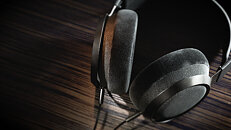
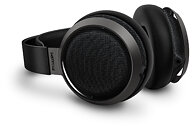
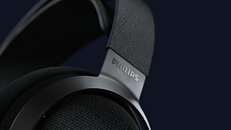
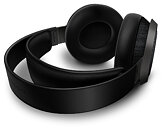
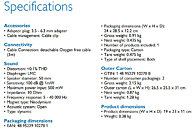
12 Comments on New Philips Fidelio X3 Over-Ear Audiophile Headphone Available in USA Now
but i think their engineering team has changed since then, not 100% sure. 350 is still a lot of money... i mean for 350 you can get some really top tier cans these days, the competition has brought prices down a lot. im skeptical these will compete, but we will see
I had a chance to try the X2 at a meet... this was years ago now, but I really didn't like them and never got the hype. They weren't especially dynamic or detailed. They have that 'oversharpened' quality to the details... exaggerated in a way that at first pops out and then reveals to you that there actually isn't anything there. Sort of that 'wall of detail' phenomenon. Or detail in the way that static has a lot of detail. I distinctly remember that they had nasty, uneven treble that would jump out and surprise you. At times, you'd think it was on the dark side... with vocals, for instance.... they would sound sort of pushed back on the high end. But swap those for a piano, or a violin and it's just glass shards.
The bass was pretty good and full, squarely in the middle... but the wonky scooped tonality made it a no-go for me. If you want an exaggerated sound they're good, but I found them tiring. Similar to Beyer DT-990's, only not as prickly and more bass. They're fun and spacious sounding... which if the new model is anything like that, isn't worth that kinda cash. The pumped-up bass and treble come off as a gimmick. Without it, I don't think they'd have stood out at all.They're opposites, tonally. Senns are known for that really natural presentation that's intimate and serves up every little detail. I'm thinking HD6x0 models. The Fidelios slide all of that back for a 'boosted' sound. VERY v-shaped. They slam and fizzle, but the mids and lack of real technicalities (compared to similar stuff) kill it. Too many common instruments just sound weird on them.
Honestly, some tuning fixes could make those pretty good. But I wouldn't call the X2 an audiophile headphone. Not a bad headphone, but not too many audiophiles want a headphone that's pretty much the opposite of neutral, with average performance, for the price of headphones that actually have what they want. But for like, gamers or regular people who want something that sounds exciting to use occasionally, I'd still reccomend the X2. They really gotta fix that tone problem if they want to sell the X3's for 350 clams though! For real!
I agree with your X2 review, my only compliment for the X2 is the soundstage was extremely accurate, but even then the similarly priced K7xx headphone was better overall imo, I regret selling my K7xx, oh well.
The 58x's are nice, too. I'd probably grab a pair but I think I'll just grab a second pair of HD650's while they're still making them. I have tried dozens of headphones, some better in certain regards, but the only thing that's come close to knocking those off of my head are the Focal Utopia's. Which as of right now are $4000 sooo... yeahno :rolleyes: The one downside with senns is the staging and the Utopia is the only one I know of that sounds close to a mix of HD650/600, only with alla da bass AND good soundstage. Senns just have a very close headstage and the middle is kind of indistinct due to the bass being weaker and less snappy. But honestly, it's a small price to pay for something that sounds both smooth and detailed. It's like hearing the essence of everything. Natural and true. It gets hard to use anything else.
As far as full-sized cans go I have used the Sennheiser HD6XX, AKG K701, Hifiman HE4XX, and even Stax (L300), but keep going back to my X2s for their relaxing signature. I don't find them fatiguing at all. Sometimes neutral 'phones with gobs of technical detail are exhausting.
I'm interested what changes, if any, to the Fidelio X series sound signature Philips has made. Personally I think the X2s are perfect at what they do, so am suspicious that these X3s may have lost the niche.
Distortion isn't the worst thing. I understand that perfectly well and seek it out at times. But I also look at the measurements on such an amp and see that most of that distortion is second-order, which tends to be harder to perceive directly and is associated with clear, 'euphonic' sound. And then I look at the higher-order... particularly 4th and 5th, which I call the 'mush factor' and see that it's in the .00x range. I'm not convinced there has ever been a very enjoyable amp made that predominately has high amounts of high order harmonic distortion.. So not all distortion or coloration is created equal. And further, people may believe certain things about tube amps, but I'm fairly confident that most people who try good tube amps will actually like them, regardless of what they think distortion is or isn't. What's the line you always hear? "It doesn't sound as 'tubey' as I thought!" The coloration of a good tube amp works with everything, without even jumping out at you as colored. It's not genre or headphone specific. Instead it sounds 'right' and natural. You have to hear it to believe it and even then, it's not obvious that the sound has been altered at all.
But that's not always the case with distortion, particularly in the transducers themselves. A heavily colored speaker may sound very good with some things and awful with others. It can be a boon or a major drawback, depending on who you ask.
I would agree that total accuracy or neutrality aren't necessarily the be-all, end-all. I feel like that's kind of a new thing. To me it's 25% truth, 75% marketing... talking about 'transparent' or 'true-to-sound' rendition, as if there is a way to even quantify it. And then they'll tell you it's because it has over 120db SINAD and .0000001% 1khz THD+N @95db. There's a trend with amp makers now to put as many zeros as possible behind the decimal point in their THD @ 1khz measurements. To me, that's an extraordinarily narrow way to grade the behavior of an amplifier. So many other things that are not in fact magic can be looked at. But it feels like it gets discarded in favor of simple, cost-effective circuits with as much negative feedback as possible, sucking the life and engagement out. Excellent on paper, lackluster to hear. They won't hurt to listen to, but you may wonder why it costs $500 (looking at you, Topping A90.) They've simply traded lies of commission for lies of omission. They may add nothing bad, but do still take away something good... taking all of the distortion out, orders of magnitutde below what anyone can reasonably hear on a sine wave, but in doing so introducing unwanted effects and taking good stuff out, too. I think people also forget that they're still plugging-in headphones with over 1% THD in spots... with some IMD for fun... smaller full range driver physics and all of that.
Headphones are strange creatures. Not a pair exists that isn't colored. The FR and oft overlooked resonance over in the time domain make each sound unique, and preference takes a greater role. It's hard to really pin down what a good headphone is and isn't. FR plots and CSD waterfalls can reveal a lot, but still not tell you if you'll like them. But over the years of talking to people and meeting people I've noticed there is a trend in a preference for a reasonably balanced frequency response with low distortion, specifically in the transducers themselves. People generally like the sound better. And it's not hard to understand. Headphones can have significant swings compared to speakers... enough that certain things start to sound really off. Another disadvantage would be no room masking. Any anomolies get beamed into your ears. Tuning is one thing... re-balancing the coloration that's there. But not too many people seem to clamor for more coloration.
I would say this is the majority take among headphone enthusiasts. The coloration is sought in the amps... or even in DACs, where it's a much smaller amount of coloration. Because sometimes enough is too much, and not much can be done to get around the coloration already in the headphones. While it may be true that no truly neutral headphones exist (by physics alone,) most are tuned to get as close as possible to an even frequency response. And many times the thing that distinguishes a less desirable headphone is the presence of peaks and nulls in the wrong places. Uneven response often messes with the signature of things, so that they no longer sound like you expect those things to sound.
There are outliers like the Grados and maybe even Beyers, which are tuned for a sound that is niche. I would group the X2's in with those, not because they sound the same, but because they never seemed to reach the majority and like those two are tuned specifically to not be neutral. Got a lot of praise when they came out, but ultimately got put down by most in favor of something else. I've heard people describe them as you have, and then there have been others who describe them more like me. So many factors involved. We may just hear things differently. DAC/amp synergy comes into play. Maybe we simply listened to completely different music and problems came out in what I listened to that aren't heard in other genres. The common complaints are that it sounds too veiled/no air, bass gets out of control, and treble gets peaky. And yet others don't hear this and instead describe the overall presentation as I might describe an HD650 if it had a bigger headstage.
To me, this suggests that the coloration is a bit of a detriment. For all of the love it may get from some crowds, the inconsistency means that many more won't get use out of it. Kind of a similar story with the HD800. It was a detail beast with probably the best layering, imaging, and staging around. In fact, I can't say I've heard anything that beats them in all of those regards at once. But the tone was fatiguing for many and it absolutely required certain amps to get it to sound musical. A headphone well over $1000 with incredible performance, that you still have to go hunting for a unicorn amp to match it and maybe risk breaking the thing just to mod to a comfortable tonal profile, is a losing proposition. It kinda doomed them. They never overtook the headphones they were supposed to beat - the new flagship ultimately lost to much older ones from the same company. Nothing wrong with either headphone, but I don't see them ever being more than niche items. They're both kind of in that category of "They sound good... IF you do ___, or like ___."
And that's probably why headphones like that don't get recommended so often. They have good things going for them and they may get plenty of love by some, but unlike many other options, can't be recommended to just anybody because they do have quirks. You kind of have to know that's what you want. If you love the sound, cool. Not trying to steal anyone's pride. I can't tell anyone what they are or aren't hearing! It just seems very clear to me that demand for things like that isn't super-high among the majority of headphone enthusiasts. Ultimately, this is why I tell people the only way to know what you like is to try a bunch of things. Just reading about it really doesn't get you anywhere. There is a whole range of sounds you can have, but still some are much easier to recommend than others.Agh... it's so true though. I know that years ago tomshardware said there's nothing objectively better than the $2 dac chip on your mobo... but he was wrong. Trying different DACs has been really surprising for me. It's subtler, but the simplest way to put it is that they change little things that neither amps nor headphones can. With speakers, it's hard to tell, but with headphones they really jump out at you. The only exception would be JBL LSR305's, which I find pick up DAC differences easily for some reason. They still matter, but I generally agree that speakers are easier to get a good sound out of. Headphones themselves have tons of physical drawbacks that speakers don't. There are things even cheaper speakers can do that $4000 headphones still can't muster.
It's really tough to get into them unless you've managed to find some people you get along with who have/know gear. It took me years to find that. Now that I have, all sorts of stuff falls into my lap to keep for a week or two and try out. But before doing that, I can honestly say I had no idea what to look for or how to find it. It's not like there are places you can go to demo headphones, amps, and specific combinations of them. And sometimes just reading stuff will steer you so wrong. I have a strong feeling that a lot of new wave audiophiles on the internet are more theory than experience. But one can't replace the other. You'll waste a lot of time and money if you don't have a way to get ears on stuff. Not their fault. It really isn't an easy hobby to jump into.
I've heard people who's ears I generally trust call the 58x a cross between the 600, 650, and 660s. Definitely interesting. I may still grab them. But chances are that I'll get an opportunity to try them eventually. And then maybe I'll kick myself for not just buying them sooner. Who knows?